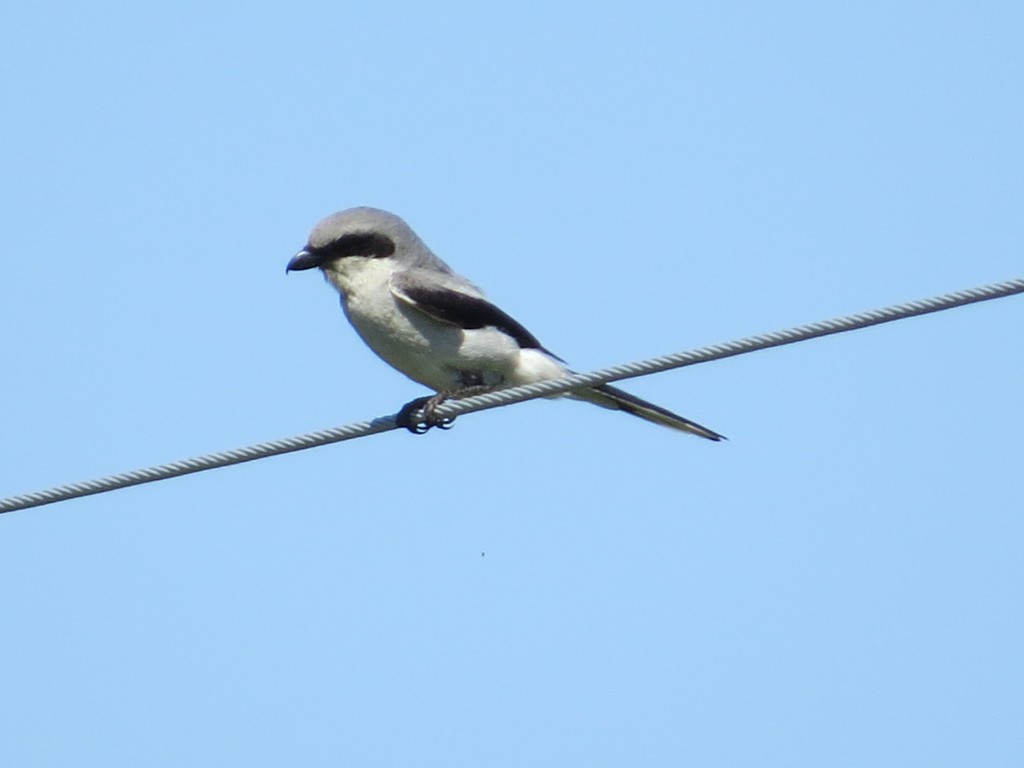
Though it looks a lot like its Northern Shrike cousin which can be found pretty regularly in the winter months all over Minnesota (they’ve even been in my yard couple times), the Loggerhead Shrike is a summertime bird that is tough to find in Minnesota. Really tough. Other birders in the county often recall Loggerhead sightings in the county as a rate in birds seen per decade. It’s a rare event indeed. In fact, the Loggerhead Shrike is scarce throughout the state and was deemed a Minnesota threatened species by the DNR in 1984 and is now being considered as a Minnesota endangered species. Recent surveys by the DNR have found fewer than 30 nests in the state. This species used to be more common. Its decline in population has been attributed to grassland habitat loss through more rural development, more intensive row-crop farming, and the encroachment of brush and shrubs on grasslands. Additionally the increased use of pesticides may be cutting down on the shrikes’ food supply since they prey on insects.
I have had the good fortune of seeing Loggerhead Shrikes a couple times in Minnesota – twice at Felton Prairie in Clay County and once along a roadside near Herman in Grant County. But I had been wanting to see one in Kandiyohi County. Joel Schmidt found one earlier this spring, but it was probably just passing through because I was never able to get on it.
Jeff Weitzel also had seen one in the county by Willmar High School this spring. I chased after that one a couple times but could never locate it. Then, a couple weeks ago I got a text from Jeff that he saw one again at the high school and I later found out that he’d seen a shrike off and on there throughout the summer. I went out that day several hours after I got the text and was able to get my Kandiyohi County Loggerhead. A great bird to see anywhere in the state, but especially fun to see one just a few miles from home.
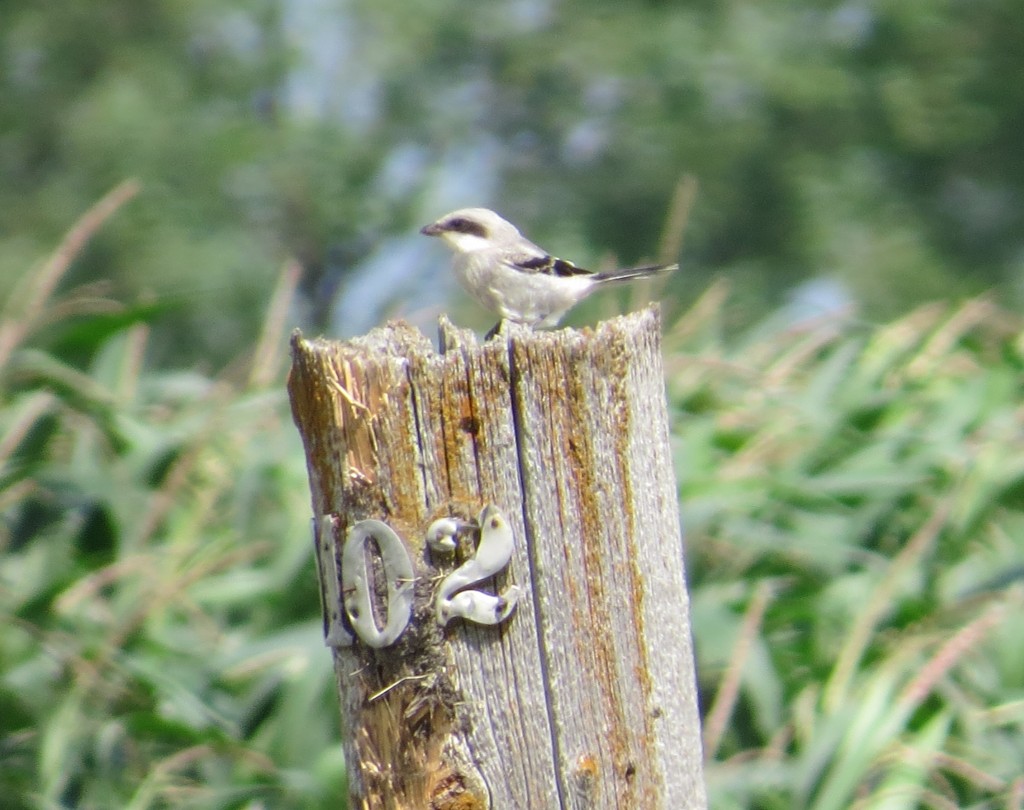
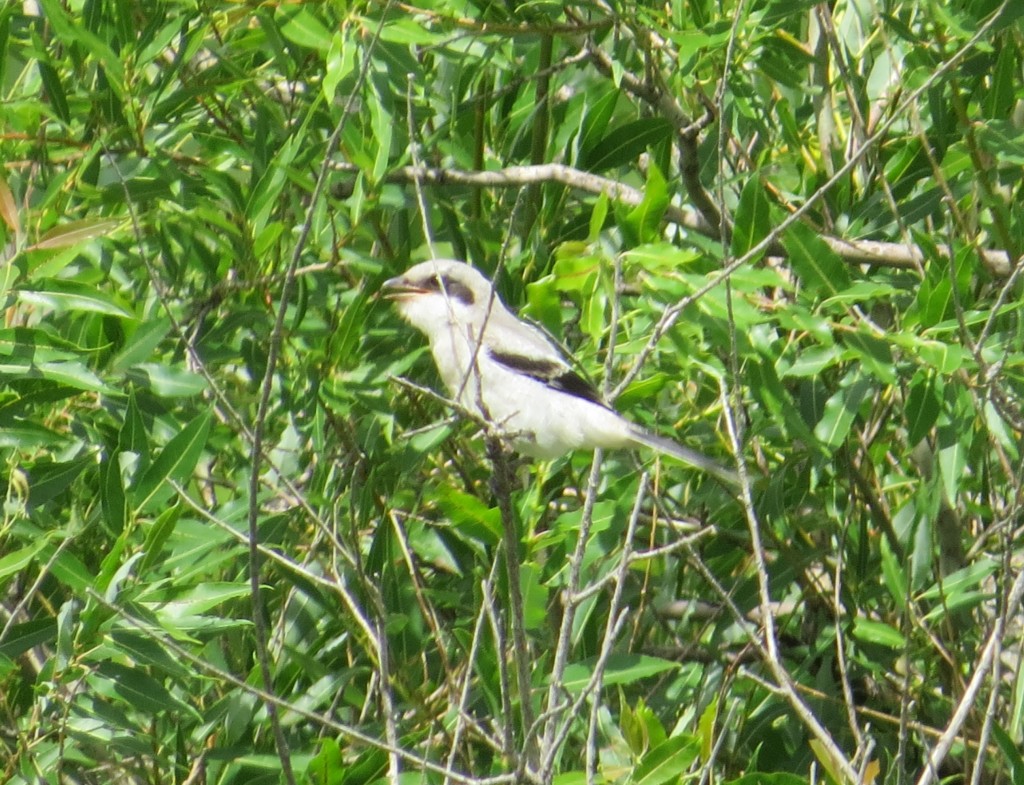
Joel Schmidt went to see the bird the next day and amazingly he found three shikes! Better yet was that two of them were juveniles. This was an historic find because the Loggerhead Shrike has never been known to nest in Kandiyohi County before. It was a banner day.
I went out the following day to hopefully see all these birds to document this finding for eBird. I lucked out. Not only did I see Joel’s three, but I found one more for a total of four birds! The three juveniles obliged me by posing together briefly in the same tree. How do you like that photo documentation, eBird?
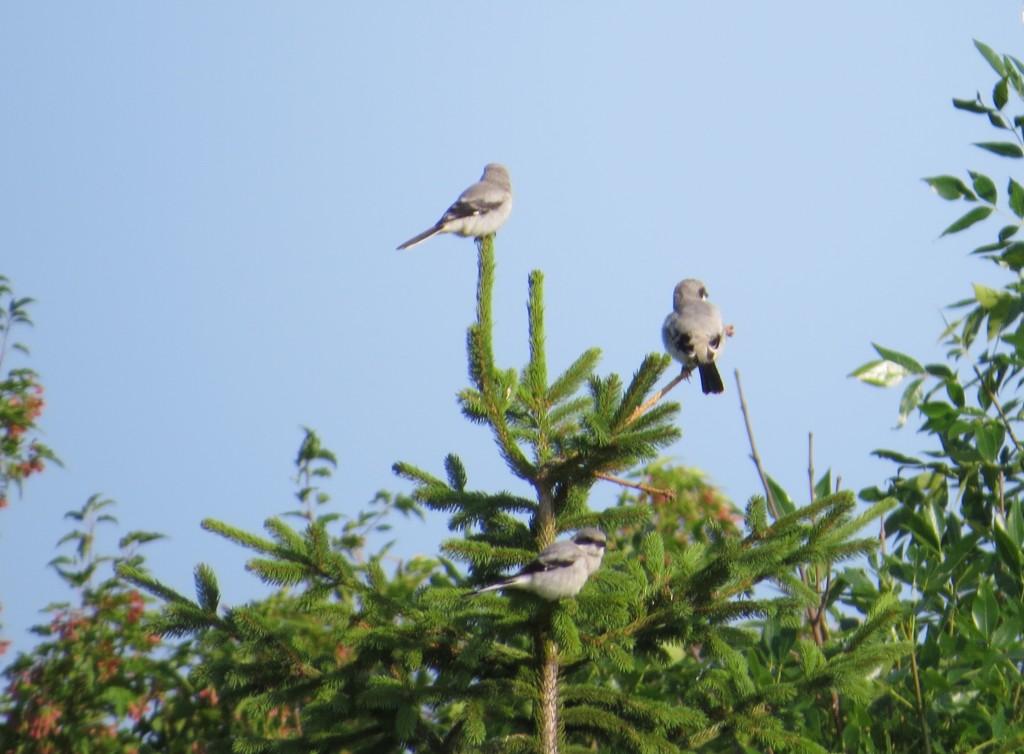
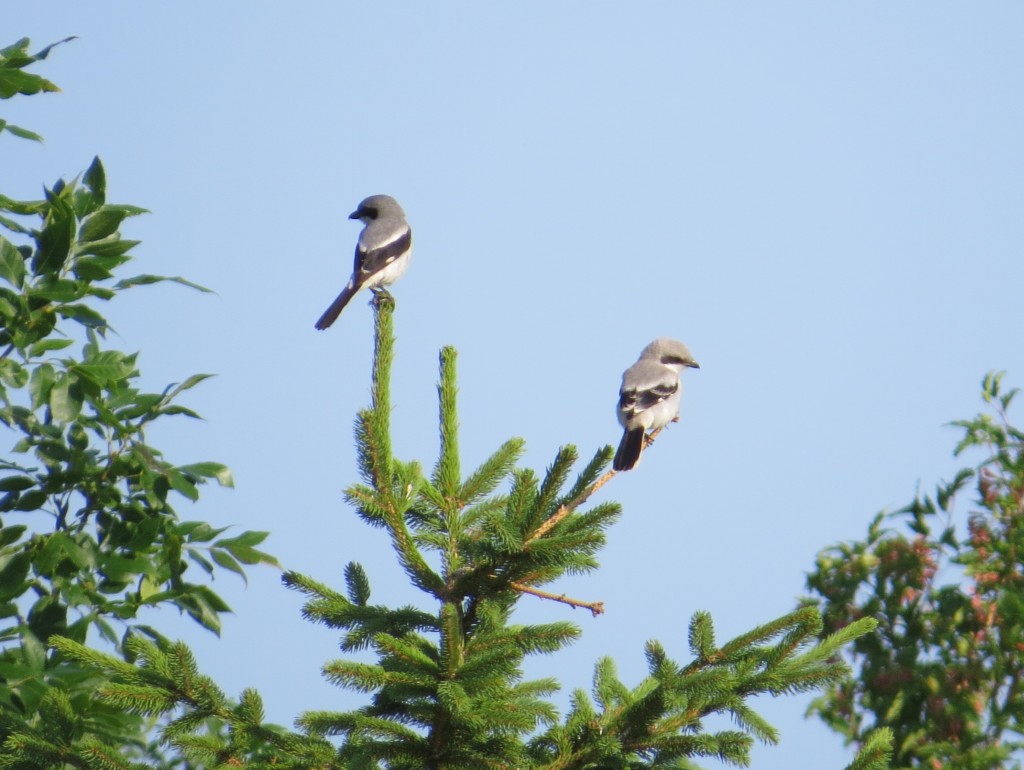
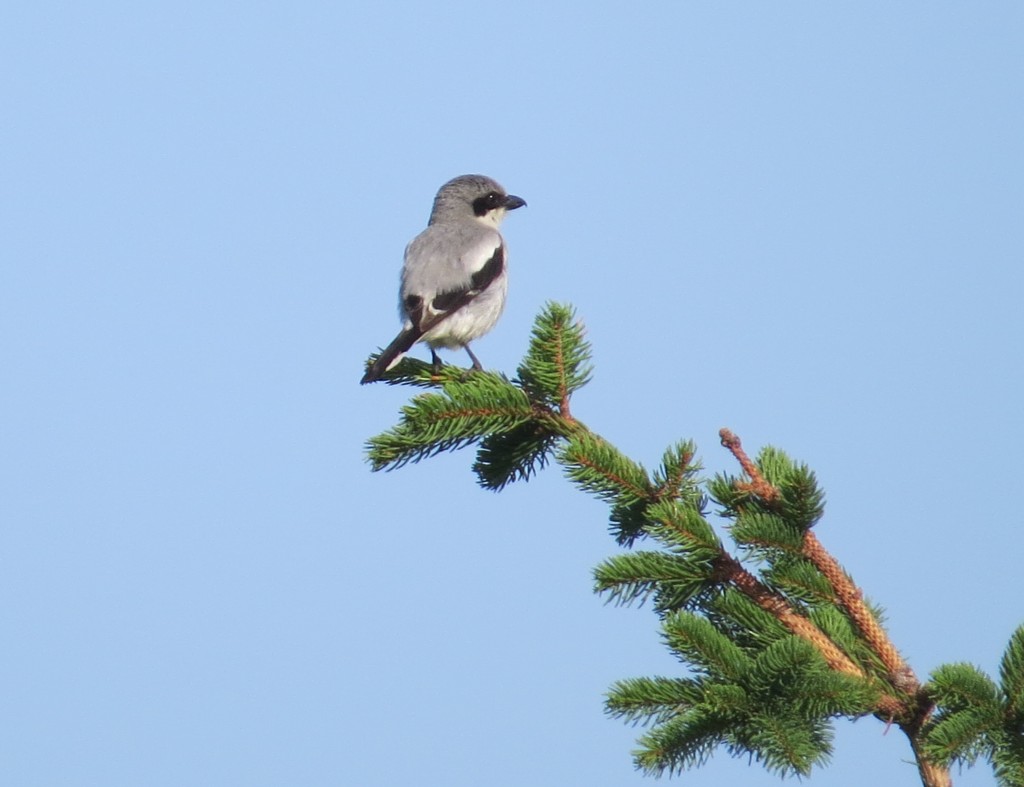
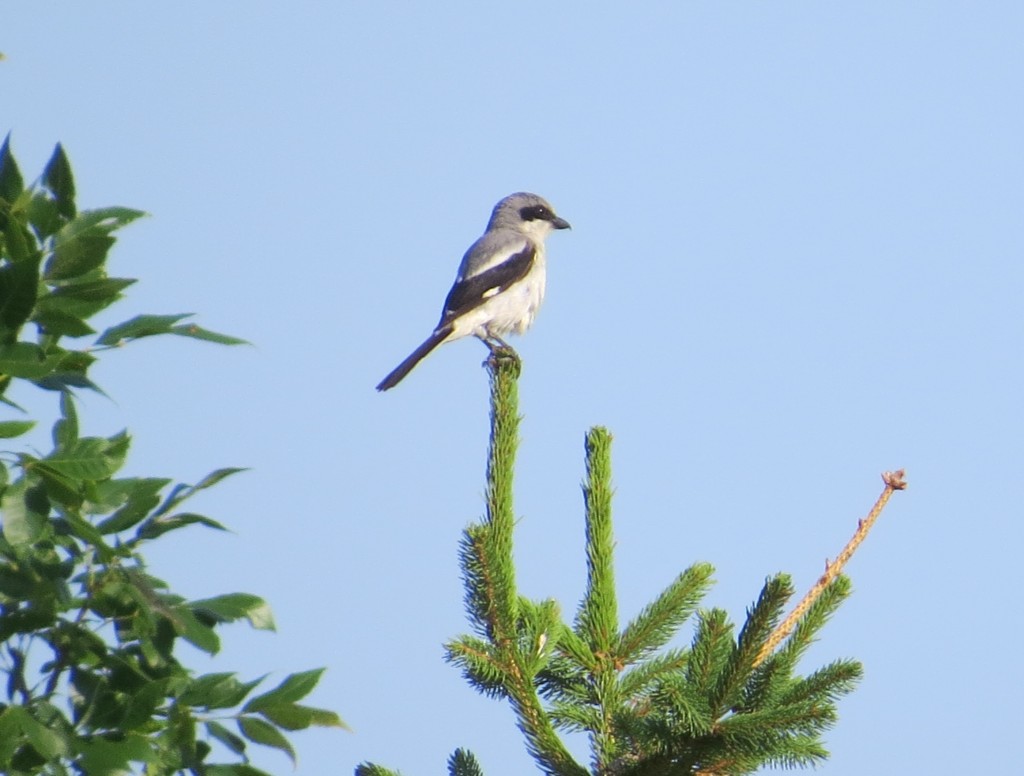
I enjoy this bird a lot. To not only see one close so to home but also to know there is a little Loggerhead factory going on is quite special. The habitat at the high school is ideal because there is nearly a half square mile of undeveloped prairie land interspersed with tree rows and sporadic shrubs. Much of this land is owned by the school or is part of the Willmar Wildlife Management Area. Because Loggerhead Shrikes have strong site fidelity when it comes to nesting and because this land will remain undeveloped, I am hoping that we will have many Loggerhead Shrikes for years to come. The more I bird the more I have come to understand how fragile certain species are and how important conservation is for the maintenance and revival of such species. This little success story is encouraging for future birds and birders.

Such a good bird…handsome and deadly. If only they were a bit more promiscuous, they’d be the James Bond of birds.
Loggerhead Shrike promiscuity would be a boon to the conservation effort of that species…the Bond movies never show all the 007 juniors that inhabit every corner of this earth.
Congrats Josh! Shrikes are neat birds. Once again, it’s funny how things are common here and rare there. In Arizona, I’ve seen hundreds of Loggerheads and only one Northern, and the Northern day was epic. That is very cool to have an endangered species breeding a few miles away from you, and well done on adding a bird to the records. You can’t beat discovering things….ever! I like the eBird comment too. Birders really have to walk around the perimeters and edges with some of those eBird reviewers.
In Maricopa County, we thought the Spotted Owl population was possibly gone after a few recent fires up in the high country within the County. A few months ago, my buddies and I were able to find one, and I was amazed that the place still had them. I went back and heard a female Spotted Owl give her contact call, so I guess that’s a bird I want to prove as breeding in my county, and it’s very likely after hearing that female.
Thanks, Tommy. It was a find worth celebrating, and it took a group effort to keep adding layers to that discovery. I can imagine your excitement over the Northern. Shoot, it’s a great day when we find one here too. I probably see fewer than a dozen each winter.
We have one eBird reviewer for the whole state, and he’s actually pretty good as I’ve only been questioned once on a rare bird. I’ve also been questioned by your Maricopa Co. reviewer over a minor detail on a fairly common bird.
Nice work on the Spotted Owl! The thrill of discovery is highly addicting. There’s nothing like finding a rarity or contributing something unique to eBird.
This is amazing Josh! I am so glad that you could document it! Well done! Nice pics and a great story!
Thanks, Kathie. It’s a victory for birds and birders everywhere. It’s fun to see a down and out species thriving even if it is just one family of birds.